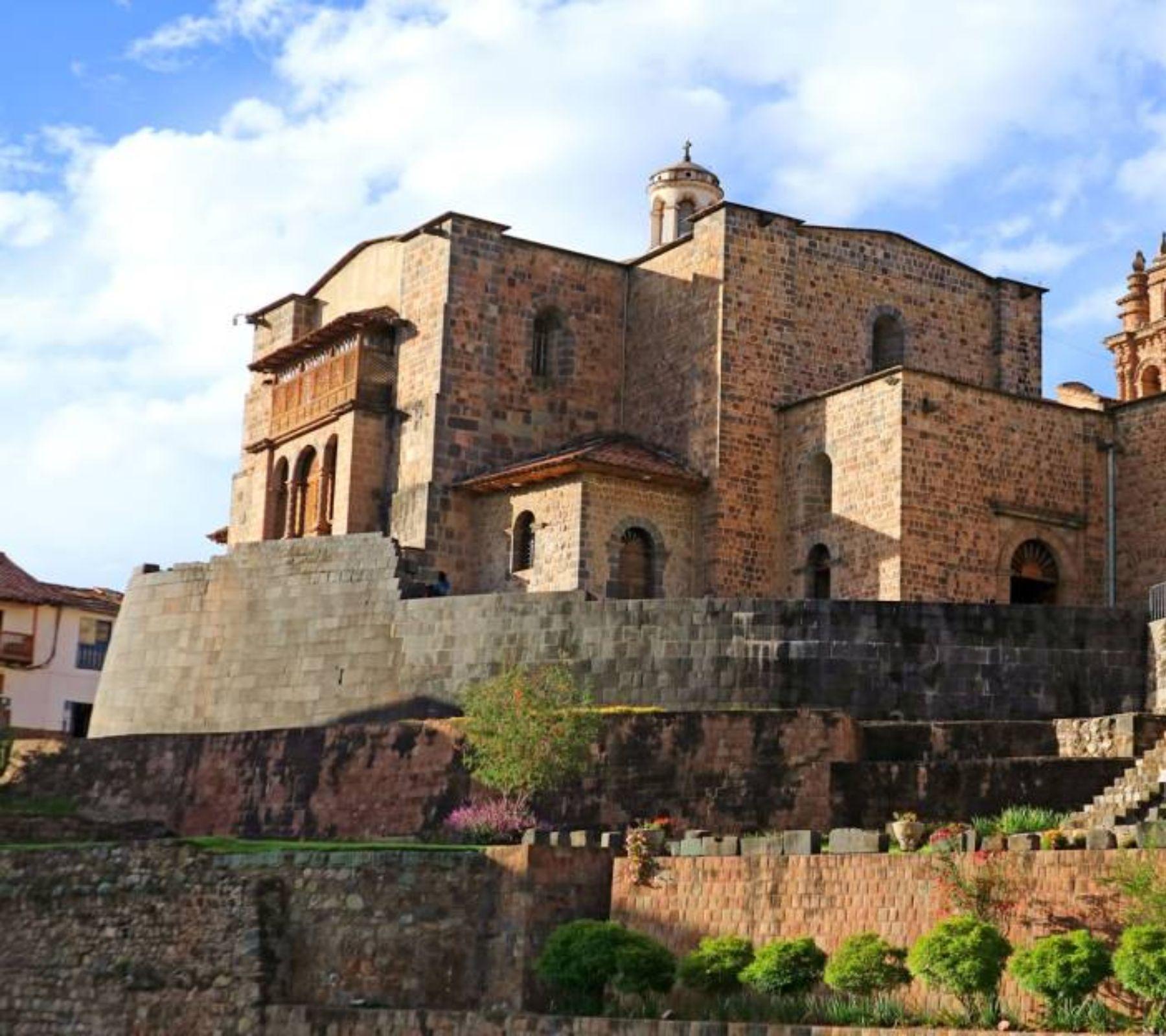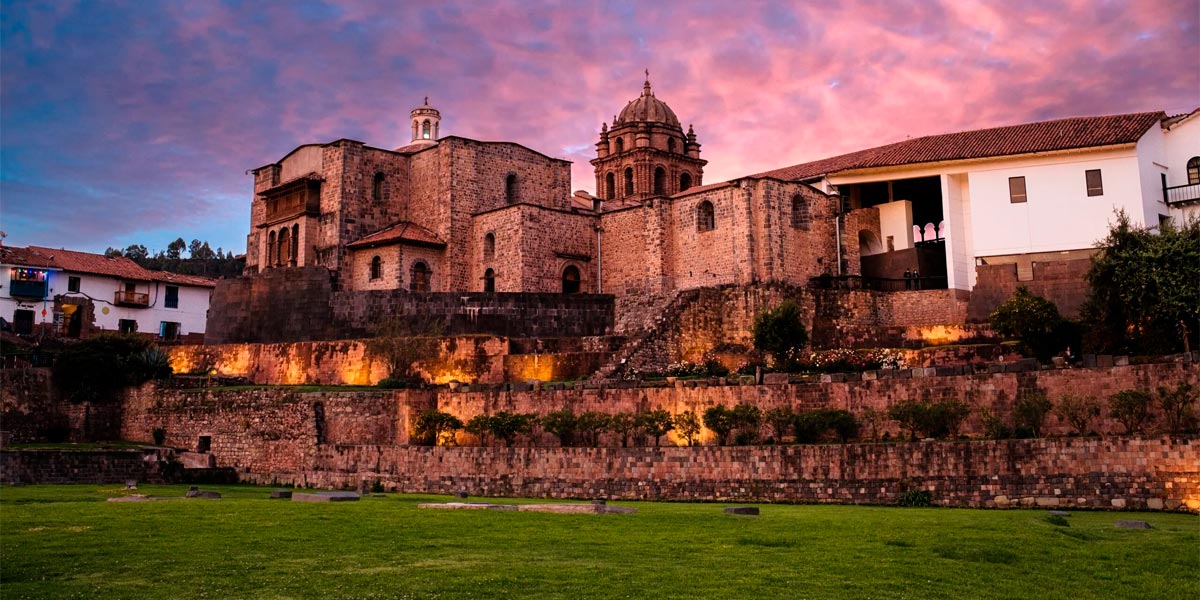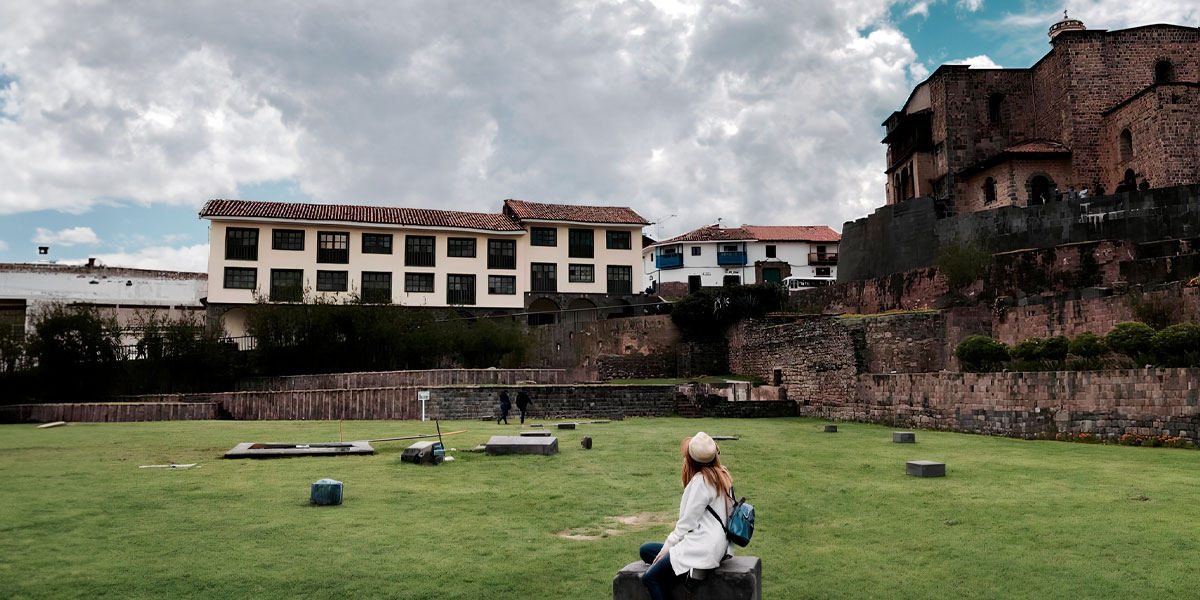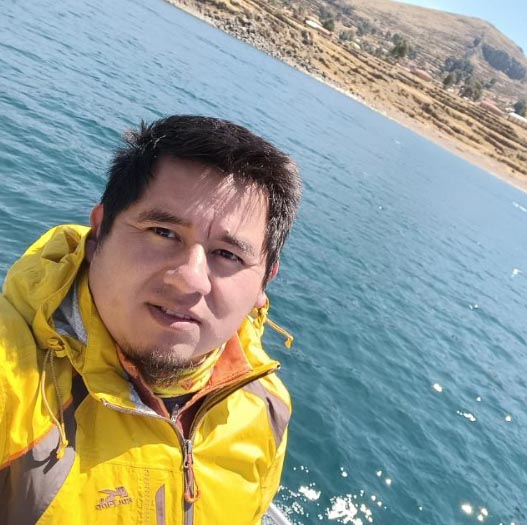The Qoricancha, also known as the Temple of the Sun, was the most important religious building of the Inca Empire and one of the most impressive sacred centers of the entire Andean civilization. Its fame is not only due to its spiritual importance, but also to the architectural skill with which it was built. In the Inca worldview, the Qoricancha was the religious, geographic, and political core of Cusco, considered the “navel of the world”. There, the highest Inca god, the Inti (Sun), received offerings and ceremonies that brought together representatives from all over the Tahuantinsuyo, strengthening the union of the four regions of the empire.
The importance of the Qoricancha Cusco led it to be built with the finest finishes of Inca architecture: stone walls covered in its time with sheets of gold that reflected sunlight. Likewise, its design and location were not accidental; they responded to an elaborate system of astronomical alignments and sacred beliefs. Even centuries after the arrival of the Spanish, they built the Convent of Santo Domingo on its foundations.
History of the Qoricancha
Originally known as Inticancha or Intiwasi (in Quechua it means “House of the Sun”), this religious enclosure was built around the year 1200 A.D., under the orders of Inca Wiracocha. Conceived as a sacred place to worship Inti, its importance would grow over time, becoming the spiritual heart of the Inca Empire.
With the rise to power of Inca Pachacútec, Cusco began an ambitious process of urban beautification. It was during this period that the Inticancha adopted the name Qoricancha (quri = gold, kancha = enclosure), and was surrounded by high walls of finely worked stone, covered with sheets of gold, silver, and precious stone ornaments that reflected the light of the sun.
The arrival of the Spanish conquistadors marked a tragic turn in its history. The temple was looted and stripped of its riches; according to some chroniclers, a large part of the gold extracted was sent to Cajamarca for the ransom of Inca Atahualpa. Later, Francisco Pizarro ceded the land to the Dominican Order, who built the Convent of Santo Domingo on its foundations. However, the earthquakes of 1650, 1749, and 1950 destroyed a large part of the colonial building, exposing the impressive solidity of the Inca walls, which remained intact.
In 1956, a restoration process began that sought to rescue and show the original structures of the Qoricancha, returning part of its splendor and allowing current and future generations to admire one of the greatest architectural legacies of the Andean world.
Interesting Details about the Qoricancha
-
Who were the first to build the Qoricancha?
According to several chroniclers, the first to build a temple in honor of the Sun were the ancient inhabitants of Cusco: the ayamarcas. This ethnic group inhabited the region in approximately the 13th century, long before the expansion of the Inca Empire, and originally called it Inticancha. Their relationship with the Incas was marked by a strong rivalry, but they were finally conquered and integrated into the Tahuantinsuyo during the reign of Inca Wiracocha. -
What does Qoricancha mean?
The name Qoricancha, also spelled Koricancha or Coricancha, comes from Quechua: Quri ("worked gold") and Kancha ("enclosure" or "walled temple"). In Spanish, it translates as Temple of Gold. Its meaning refers to a closed sacred space that protected gold objects, a symbol of the wealth and devotion that the Incas offered to their main deity: Inti, the god of the Sun. -
Architecture of the Qoricancha – Temple of the Sun
The Qoricancha was the most important religious center of the Inca Empire, dedicated to the Sun god. In addition to the main temple, it housed four other sacred enclosures dedicated to deities such as Killa (the Moon), Illapa (lightning), K’uychi (the rainbow), and Ch’aska (the star).
A continuous strip of pure gold, located three meters from the ground, ran through the entire complex and connected each sector. Even structural elements like the wires that held the straw roofs were made of gold. Its walls, made with carved and well-fitted stones, continue to be a masterful example of Inca engineering. -
Location of the Qoricancha – How to get there?
The Qoricancha is located right in the historic center of Cusco, at the intersection of El Sol Avenue and Santo Domingo street, just two blocks from the Plaza de Armas. Its easy access makes it a must-see for any traveler touring the imperial city.
Attractions of Coricancha
The description made by Garcilaso is in harmony with what is still standing today. Although this is only a pale reflection of what Qoricancha was really like in Inca times.
-
The Temple of the Sun
It was the main Temple of the entire Qoricancha, occupying more than half the width of the current Church of Santo Domingo. Garcilaso says that inside this temple were the embalmed bodies of the children of the Sun placed for antiquity on chairs and on gold boards, the walls were covered with gold plates, there was a disk representing the figure of the Sun on a gold plate thicker than the other plates that covered the temple. The western end corresponds to the current drum overlooking Av. Sol; its eastern end reached the current church atrium. -
The Temple of the Moon
This temple was closer to the Temple of the Sun, since the Moon was considered the wife of the Sun. This building was lined with silver planks, and there was a representation of the Moon made of silver. Inside were kept the mummies of the Coyas arranged in order of antiquity. Approximately half of the Temple was demolished by the Spanish to build the nave of the church of Santo Domingo. It occupies part of the western side of the inner courtyard of the Qoricancha. -
The Temple of Venus and the Stars
It is located near the Temple of the Moon, but separated by a beautiful alley, dedicated to Venus and the seven goats and all the other stars. The Incas called Venus “Chasca” which means star. According to historians, the Inca would sit in this temple to be deified or to witness festivals or sacrifices performed in the rectangular courtyard. It occupies part of the western side of the inner courtyard of the Qoricancha. -
The Temple of Illapa or Chuki Illapa
Illapa or ChukiIllapa mean lightning, thunder and lightning at the same time. The temple in question is in front of the Temple of Venus, it has three doors with single jambs, equidistant and slightly trapezoidal, and it also has a window on each side wall. -
The Temple of K'uychi or Rainbow
In this temple, the Rainbow was worshipped, which according to ancient belief, came from the Sun. It has identical architectural characteristics to the Temple of Illapa. A part of this temple was demolished by the Spanish to build the buildings of the Dominican Convent. It is located north of the Temple of Illapa and in front of the Temple of the Moon, on the eastern side of the inner courtyard of the Qoricancha. -
Intipampa
Almost all the peoples of the world, in all times, built large plazas in front of their temples. Inti Pampa (name that translates as Plain of the Sun) is the place where the nobles, their courts, service personnel, dancers, etc. stayed when during the course of festivities the Inca and the nobility moved to the Qoricancha. This site currently corresponds to the Plaza de Santo Domingo, apparently its limits and extension have hardly changed. It is located to the north of what was the Qoricancha. -
The Solar Garden
It became the great deposit of offerings that all the subjugated and confederated nations brought to the Sun God, the offerings consisted of representations of flora and fauna of the Tahuantinsuyu. According to some historians, these offerings made of gold and silver were life-size in quantity that filled the place in a surprising way.
The Spanish called it The Solar Garden because of the number of terraces. In colonial times it became an orchard for the Dominican Friars. It is located in the western part of Qoricancha, and can be seen from Av. Sol along its entire length. -
The Fountains
There were five water fountains, the origins of the water from the fountains were a kept secret. The fountains had religious significance and were decorated with precious metals. They were located throughout the entire length of Qoricancha, currently we can see a fountain with octagonal corners in the courtyard of Qoricancha.
Hours and entrance fees
The Temple of the Sun is open from Monday to Saturday from 9:00 a.m. to 5:00 p.m. and on Sundays from 2:00 p.m. to 5:00 p.m.
GENERAL ENTRANCE is S/.15.00 for foreign or national tourists. Entrance is not included in the Tourist Ticket.
Other interesting blogs:
- Where is Machu Picchu?
- Machu Picchu Tickets: Upgrade guide 2026
- Skylodge Adventures Suites
- Machu Picchu Weather
The best trips in Peru
Peru is a country full of contrasts: coast, highlands, and jungle offer unique routes for those looking for adventure, history, and unforgettable landscapes. From cities full of heritage to surprising natural destinations, each region shows a different side of the country and leaves indelible memories. Get to know the best trips in Peru:
- Amazon Inca Trail Lake Titicaca
- Ultimate Peru Adventure
- Best Peru Tour
- Peruvian Adventure Tours
- Peru Travelling
- Inca Trail Peru
If you want to live this great experience do not hesitate to contact us. Reserve our guided trips to Machu Picchu by contacting our travel experts and you will be closer to completing your adventure:








